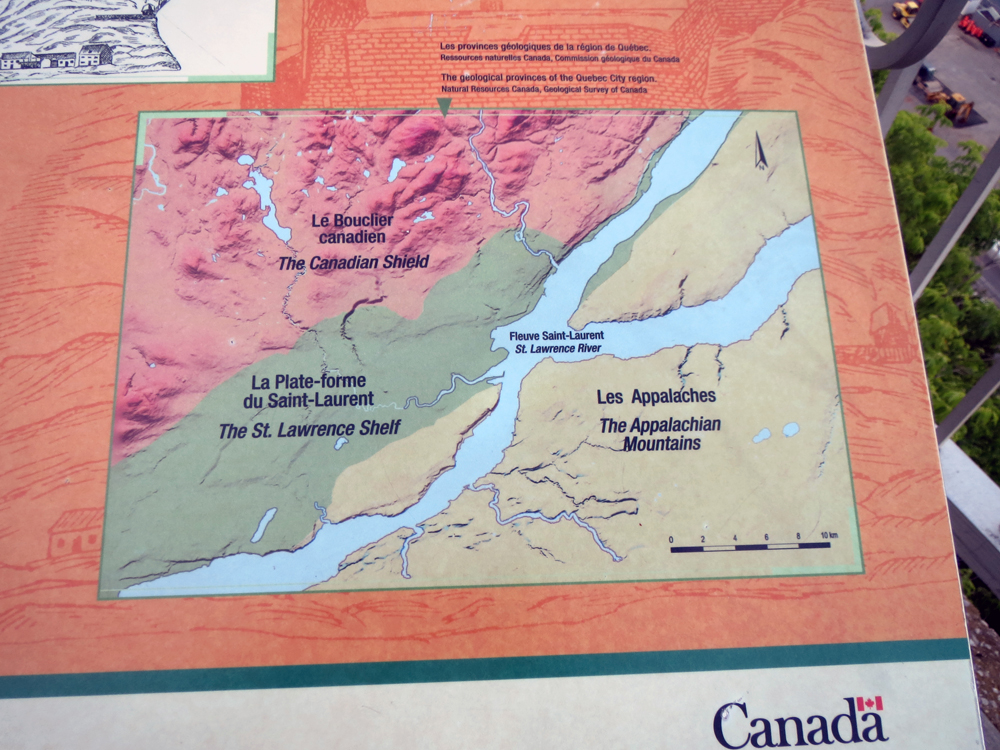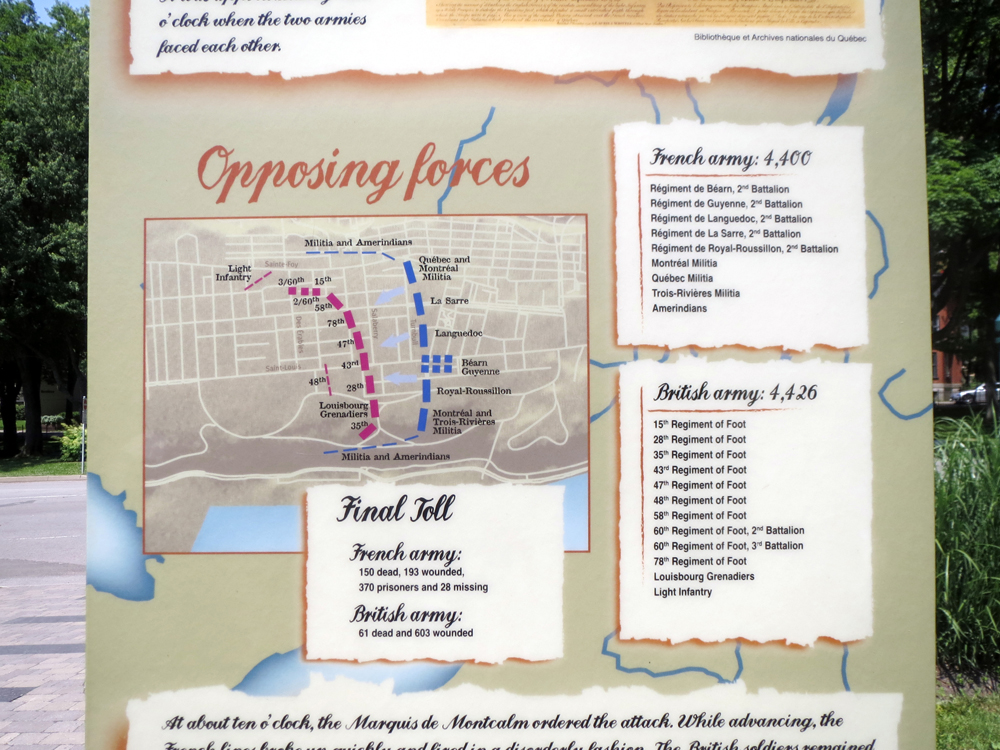When I was in Québec I had the good fortune to take photographs of multiple signs and graphics aiming to educate readers about various things. I have spent a bit of my weekend combing through my photographs to see what I can present.
The first in today’s post is simply why Québec was so important. It sat at the narrowest part of the St. Lawrence River upstream from the Atlantic and, most importantly, was defendable from a high, rocky terrain that fell into the river via a sheer cliff face. But why was all of that? Geology explains all (in this graphic). Cap Diamant, where la Citadelle de Québec resides, sits atop an outcropping of the Appalachian Mountains while a sedimentary valley separates it from the Laurentian Mountains. The St. Lawrence just happens to cut through it and voila, natural defensible territory. Or as Charles Dickens put it, the Gibraltar of North America.

The second is a quick series of graphics that basically explain why, despite the heavy French influence, Québec is a province of the majority English-speaking country of Canada, a former British colony. In short, the Battle of the Plains of Abraham (and to a lesser extent the Battle of Sainte-Foy.
In 15 minutes on the Plains of Abraham, a British infantry force under General Wolfe defeated a French infantry force under General Montcalm. Both generals died in the battle and just a few days later, the city of Québec surrendered to the British. This gave control of the entrance to the Saint Lawrence to the British. And with the British then entrenched behind the city walls, they were capable of withstanding any French siege.

The second graphic explores the Battle of Sainte-Foy, which was a French victory over General Murray. The British then retreated to the defences of Québec, but the French forces failed to capitalise on their victory—and were in general too under-resourced. So the city remained in British hands while the Royal Navy destroyed the French Navy off the coast of France. And without supplies sent via the French Navy, the French were forced to surrender not just Québec, but Montreal and the whole of Canada to the United Kingdom. Fearing rebellion, London allowed Canada to retain its religion, language, and culture. Hence, a Francophone population in an otherwise English-speaking North America.

Credit for the pieces goes to unknown persons who designed the signage for various parks in Québec.
